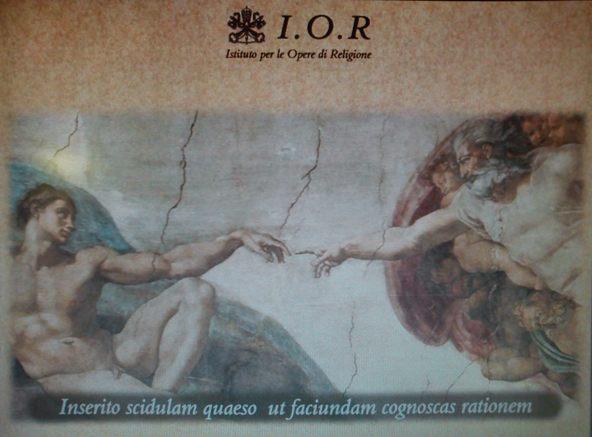Factbox on the Vatican Bank and Dismissal of Its President
The Reuters
The Vatican bank has been shaken by the dismissal of its President, Italian Ettore Gotti Tedeschi, who was removed by its board of external financial experts over accusations of negligence and failing to fulfil basic duties. A day after Gotti Tedeschi's sacking, the Vatican announced that Pope Benedict's butler had been arrested and accused of leaking secret church documents in what has evolved into the worst internal crisis of Benedict's papacy. Here is a look at the 70 year-old Vatican Bank and its scandals: * The Vatican bank, known formally as the Institute for the Works of Religion, (IOR) was established in 1942 by Pope Pius XII and is used by Vatican agencies, church organisations, bishops and religious orders around the world. * It is a privately held institution located inside Vatican City run by a professional bank CEO who reports directly to a committee of cardinals, and ultimately to the Pope. * It offers currency exchange services and interest-bearing accounts and has an investment portfolio. * It has no branches outside Vatican City and it operates as an offshore institution outside EU rules. * There are no shareholders and no policy-making functions. * The supervisory council of lay experts was established in 1989 in a reorganisation of the bank, following an Italian banking scandal. * Last year, the Vatican enacted laws to bring it in line with international standards on financial transparency in the biggest action ever taken by the Holy See to meet demands for more financial openness. It established an internal watchdog, known as the Financial Information Authority (FIA), to check compliance with international financial law. A WHIFF OF SCANDAL: * In September 2010, Italian investigators froze millions of euros of funds in Italian banks after they opened an investigation into possible money laundering. Two transfers from an IOR account were deemed suspicious and blocked. One was a transfer of 20 million euros to a German branch of a U.S. bank and another of 3 million euros to an Italian bank. * The bank said it did nothing wrong and was just transferring the funds between its own accounts. The money was released in June 2011, but the investigation is continuing. * The allegations were seen as a setback to the Vatican's bid to be included in the so-called "white list" of states which comply with international standards against tax fraud and money-laundering. A decision on its inclusion is expected this summer. * Gotti Tedeschi, a conservative Catholic who once worked for Spain's Banco Santander, was IOR head from 2009 until last Thursday. BANCO AMBROSIANO: * The Vatican Bank was previously mired in scandal in 1982 when its then-governor, Archbishop Paul Marcinkus, was indicted over the collapse of what was then Italy's largest private bank, Banco Ambrosiano, with more than a billion dollars in bad debts. Magistrates accused the IOR at the time of being responsible. * The fallout from that scandal took a darker turn when Banco Ambrosiano's chairman Roberto Calvi was found hanged under Blackfriars Bridge in London. * Several investigations failed to determine whether Calvi, known as God's Banker, had killed himself or was murdered. The Vatican denied any responsibility for the collapse of Ambrosiano, in which it held a small stake, but in 1984 it made a "goodwill payment" of $250 million to creditors.
|
.
Any original material on these pages is copyright © BishopAccountability.org 2004. Reproduce freely with attribution.
